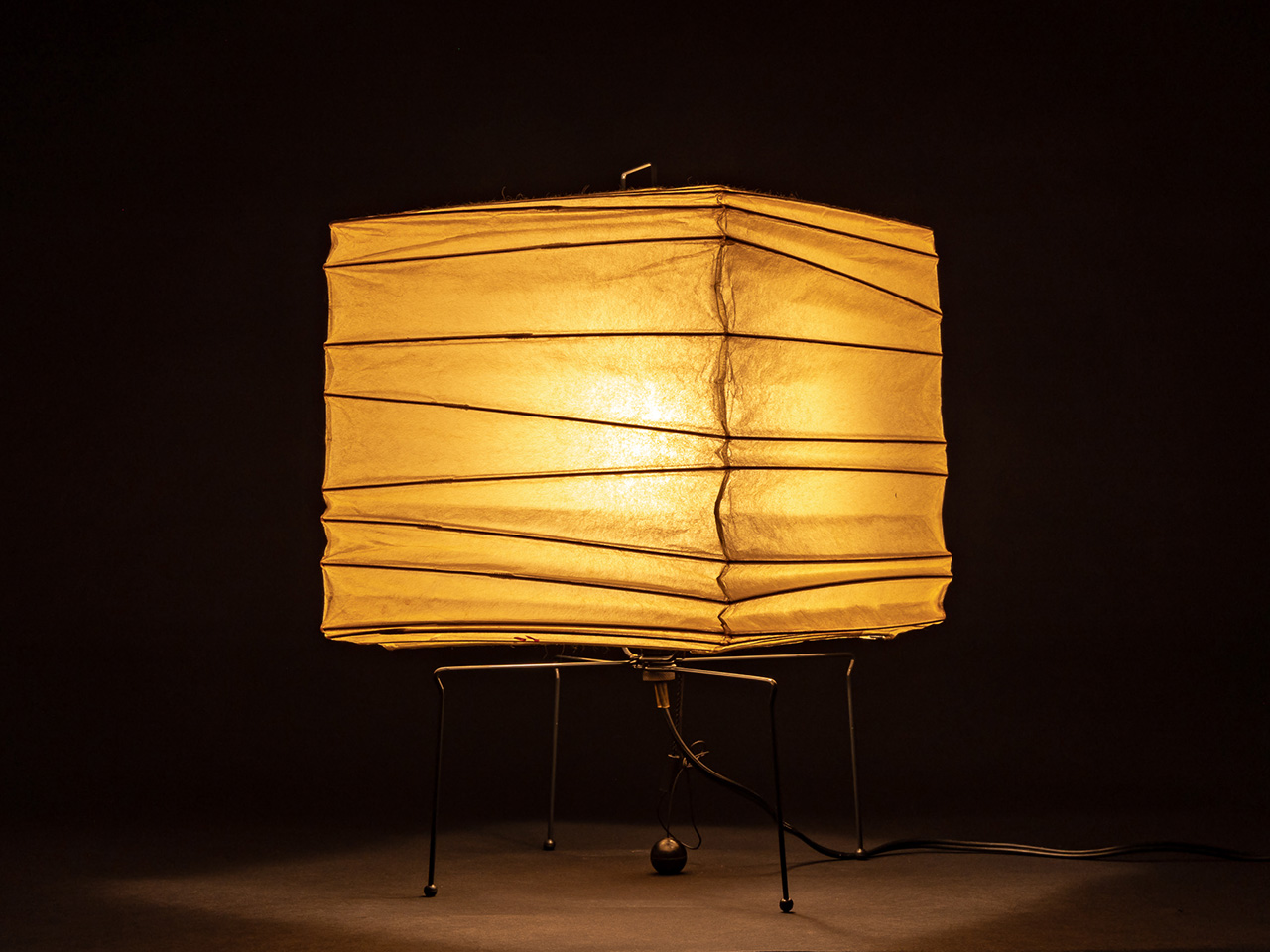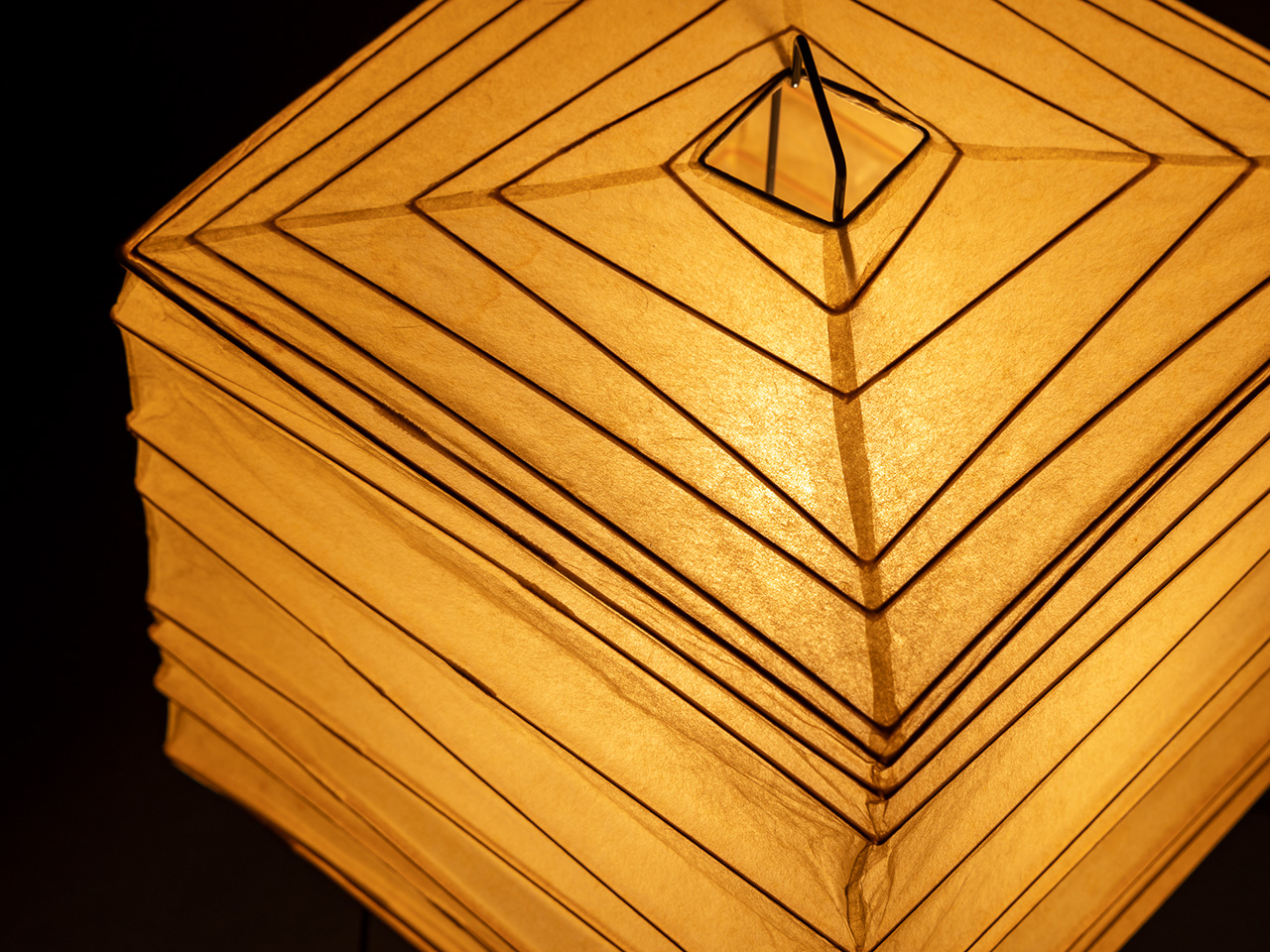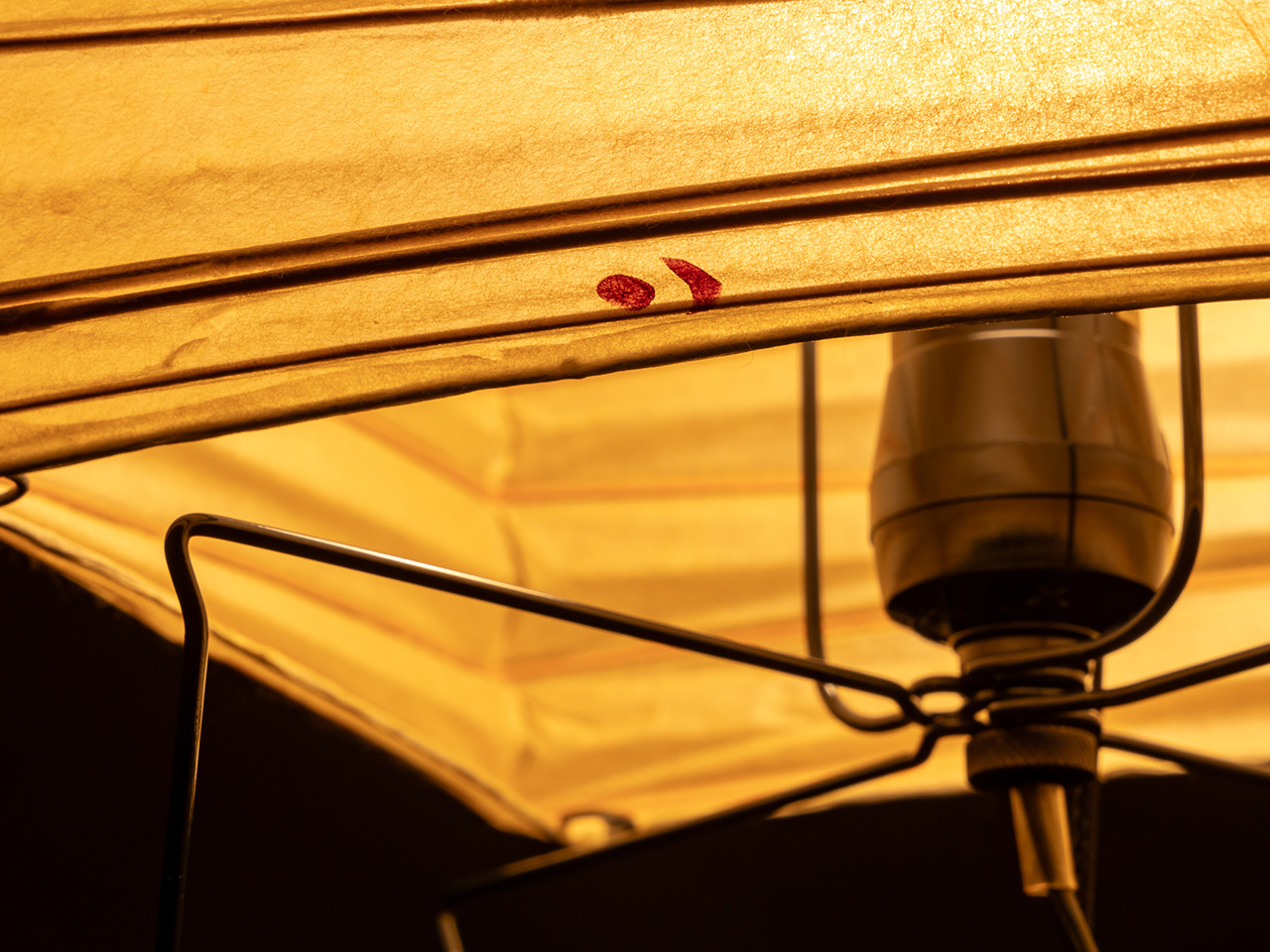イサム・ノグチ/Isamu Noguchi
イサム・ノグチ(1904~1988)は、世界やジャンルを横断して活躍した20世紀を代表する総合芸術家です。彫刻をはじめ、舞台美術や家具の制作から、庭や公園などのランドスケープのデザインにいたるまで、幅広い分野において卓越した才能を発揮しました。
詩人の野口米次郎(1875~1947)を父に、アメリカの作家レオニー・ギルモア(1873~1933)を母に持つノグチは、日露戦争の最中、アメリカのロサンゼルスで生まれました。母子を残して日本に帰国した父が結婚して別の家庭を築いていたため、母とともに来日した後も長く一緒に暮らすことはできず、14歳の頃には単身で渡米することとなります。高校卒業後、当初はコロンビア大学で医師を目指したものの、やがて彫刻の道を志すようになり、1924年からニューヨークのレオナルド・ダ・ヴィンチ美術学校の彫刻クラスに通いはじめます。生涯を通して様々な時代の潮流や作家から影響を受けたノグチですが、1926年にその作品と出会った彫刻家、コンスタンティン・ブランクーシ(1876~1957)は、とりわけ大きな存在感を放っていました。その翌年、グッゲンハイム奨学金を得てパリに渡ると、午前中はブランクーシの助手を務め、午後は大学でデッサンを学び彫刻を制作するという日々を過ごしました。1930年には奨学金が切れ、日本に帰国することになりますが、その途中で北京に滞在した際には水墨画の巨匠、斉白石(せいはくせき・1864~1957)のもとで筆と墨による人体ドローイングに没頭します。ここで、「外側から描く」西洋的なデッサンではなく、「内側(血や神経の流れ)から描く」東洋的な表現に触れたノグチは、ようやくブランクーシの影響から解放され、生来の「身体」への関心を改めて強めていきます。30代に入るとカリフォルニアに移り、舞踏家のマーサ・グレアム(1894~1991)のために舞台装置を制作するようになりますが、演者の身体表現と融合して一つの空間を作りあげるノグチの挑戦は、のちの空間デザインの仕事へとつながっていきました。戦後、ニューヨーク派のなかで頭角を現していた気鋭の芸術家として来日したノグチは、西洋の影響を受ける日本美術界の現状を咎め、北大路魯山人(1883~1959)のアトリエの一角で焼きものによる彫刻の制作を始め、埴輪や縄文土器を彷彿させる一連の作品は日本中に衝撃を与えました。この時期のもう一つの代表作、日本の伝統的な仏壇飾りである岐阜提灯を「光の彫刻」として作り直した「あかり」シリーズは、200種類以上の様々な形態を展開し、日本発信の世界的なブランドとして高い評価を得ています。なお、光を内包する彫刻というノグチの試みは、1930年代から「ルナ―彫刻」というかたちで実践されてきていました。
50代に突入して以降は、かねてより関心を寄せていた庭や公園を、世界各地で意欲的に制作していきます。香川県の牟礼町において、石彫家の和泉正敏(1936~2021)をはじめとする「石のアトリエ」のメンバーたちとともに作りあげた抽象的な彫刻群は、彼を「世界のノグチ」たらしめた晩年の傑作です。また、1988年にニューヨークで亡くなる前に計画していた北海道札幌市の「モエレ沼公園」は、「全体をひとつの彫刻作品とする」というコンセプトのもと、自然とアートが融和する、ノグチの最後にして最大の作品として造成されました。「異文化との融合」、「生活と芸術の一体化」という、ノグチが生涯追い求めた理念も、あらゆる垣根を旅人のごとく軽やかに越境する彼だからこそ実現できたと言えるでしょう。
Isamu Noguchi (1904-1988) was a quintessential multifaceted artist of the 20th century, whose work transcended both global boundaries and artistic genres. His exceptional talents spanned a wide range of fields, from sculpture to stage design, furniture creation, and even landscape design for gardens and parks.
Noguchi was born in Los Angeles during Russo-Japanese War, to a Japanese poet father, Yonejirō Noguchi (1875-1947), and an American writer mother, Leonie Gilmour (1873-1933). Due to his father’s return to Japan, where he established a new family, Noguchi and his mother were left behind. As a result, Noguchi could not live with his father even after moving to Japan with his mother. At the age of 14, he returned to the United States alone. Although he initially aimed to become a physician at Columbia University after high school, he soon turned his focus to sculpture, enrolling in the sculpture class at the Leonardo da Vinci Art School in New York in 1924. Throughout his life, Noguchi was influenced by various artistic movements and artists, but it was the Romanian sculptor Constantin Brâncuși (1876-1957), whose work he encountered in 1926, who had a particularly profound impact on him.
The following year, Noguchi received a Guggenheim Fellowship and moved to Paris, where he spent his mornings assisting Brâncuși and his afternoons studying drawing and creating sculptures at university. In 1930, after his fellowship ended, Noguchi returned to Japan, but during his time in Beijing, he immersed himself in ink and brush figure drawing under the tutelage of the Chinese master of ink painting, Qi Baishi (1864-1957). This experience introduced Noguchi to Eastern drawing techniques, which focus on capturing the “inside” (such as the flow of blood and nerves) as opposed to the Western approach of drawing from the “outside”. This shift in perspective allowed Noguchi to free himself from Brâncuși’s influence and rekindled his innate interest in the “body”. In his 30s, Noguchi moved to California, where he began creating stage sets for the dancer Martha Graham (1894-1991). His innovative challenge of integrating physical expression with stage space laid the groundwork for his future work in spatial design. After World War II, Noguchi returned to Japan as a prominent artist of the New York School and criticized the Japanese art world for its Western influences. He then began creating ceramic sculptures in Rosanjin Kitaoji’s (1883-1959) atelier, producing a series of works reminiscent of haniwa (ancient clay figures) and Jomon pottery, which caused a sensation throughout Japan. Another notable creation from this period was his “Akari” series, where Noguchi transformed the traditional Japanese Gifu lantern, which was traditionally used in Buddhist altar decorations, into “light sculptures”. The series, which features over 200 different forms, received high acclaim as a globally recognized brand originating from Japan. Noguchi’s exploration of sculpture that incorporates light began in the 1930s with his “Lunar Sculptures”.
From his 50s onward, Noguchi actively pursued his long-standing interest in designing gardens and parks around the world. His abstract sculptures, created in collaboration with Masatoshi Izumi (1936-2021) and other members of the “Stone Atelier” in Mure, Kagawa Prefecture, are considered masterpieces that solidified his reputation as a global artist. Noguchi’s final and most significant project was the Moerenuma Park in Sapporo, Hokkaido, conceived as “a single work of sculpture”, where nature and art coexist in harmony. Noguchi’s lifelong ideals of “cultural fusion” and the “integration of life and art” were realized through his ability to seamlessly transcend boundaries, akin to a traveler navigating various worlds.



作品名:AKARI 3X (Early)
サイズ:H36×W23cm(Light Sculpture)
価格:SOLD OUT
価格は税抜き表示です

